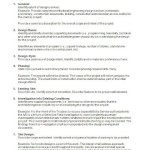Interior Door Rough Openings: Essential Aspects for Seamless Installations
Interior door rough openings form the foundation for seamless door installations. Understanding their dimensions and framing requirements ensures proper door fit and functionality. This guide covers the essential aspects of interior door rough openings to assist you in achieving successful installations.
Door Dimensions
The first step is to determine the door dimensions. Standard interior door sizes range from 24 to 36 inches in width and 80 to 96 inches in height. However, custom sizes may be required for specialty doors or non-standard wall thicknesses.
Framing the Opening
The rough opening should be framed using 2x4 studs spaced 16 inches on center. The width of the opening should be 2 inches wider than the door frame, and the height should be 2 inches taller. This provides sufficient space for the door frame and any necessary shimming.
Header Installation
The header, a horizontal member above the door opening, supports the weight of the door and the wall above. It should be a single piece of 2x10 lumber or two layers of 2x6 lumber nailed together. The header should span the entire width of the opening and extend at least 3 inches into the framing on each side.
King and Jack Studs
King studs, the outermost studs on both sides of the door opening, provide additional support for the header. They should be doubled 2x4 studs or single 2x6 studs. Jack studs, placed between the king studs, provide support for the door frame. They should be 2x4 studs spaced 16 inches on center.
Door Stop
The door stop, a small piece of wood nailed to the head jamb (top of the door frame), prevents the door from swinging too far open. It should be positioned 1/2 inch from the edge of the door frame and extend at least 1 inch beyond the opening.
Additional Considerations
When framing interior door rough openings, consider the following additional factors:
- Wall thickness: Adjust the rough opening width accordingly for non-standard wall thicknesses.
- Sill plate: If the floor is not level, use a sill plate (2x4 or 2x6 lumber) to level the bottom of the door frame.
- Door swing: Determine the direction the door will swing before framing the opening.
- HVAC and electrical lines: Check for any HVAC or electrical lines that may interfere with the door opening or door swing.
By adhering to these essential aspects, you can create interior door rough openings that ensure the proper fit and functionality of your doors. This will not only enhance the aesthetics of your home but also provide a secure and seamless door operation.

Door Rough Opening Sizes And Charts Ez Hang

Exterior Door Rough Openings Builders Surplus

Frame A Door Rough Opening Fine Homebuilding

Doors Measuring Rough Openings Builders Surplus

How To Measure Hollow Metal Door Rough Openings Learn More

Wondering How To Frame A Door Learn Rough In Opening For Prehung This Section Will Provide Details Of The Right Way Doorway Prepare
I Have An Interior Wall With A 35 5 X 77 Rough Opening For Door What Size Do Need Quora
How Much Rough Opening Do I Need For A Door Quora

How To Measure Your Front Entry Door

32 Inch Exterior Door Rough Opening Interior Collections Framin Steel Entry Doors Prehung








